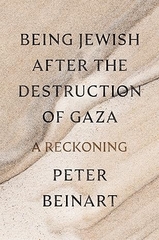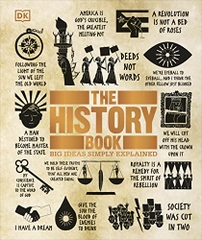-
-
-
Tổng tiền thanh toán:
-
-
Thông tin
-
Tìm sách theo yêu cầu
Stonehenge stands as an enduring link to our prehistoric ancestors, yet the secrets it has guarded for thousands of years have long eluded us. Until now, the millions of enthusiasts who flock to the iconic site have made do with mere speculation—about Stonehenge’s celestial significance, human sacrifice, and even aliens and druids. One would think that the numerous research expeditions at Stonehenge had left no stone unturned. Yet, before the Stonehenge Riverside Project—a hugely ambitious, seven-year dig by today’s top archaeologists—all previous digs combined had only investigated a fraction of the monument, and many records from those earlier expeditions are either inaccurate or incomplete.
Stonehenge—A New Understanding rewrites the story. From 2003 to 2009, author Mike Parker Pearson led the Stonehenge Riverside Project, the most comprehensive excavation ever conducted around Stonehenge. The project unearthed a wealth of fresh evidence that had gone untouched since prehistory. Parker Pearson uses that evidence to present a paradigm-shifting theory of the true significance that Stonehenge held for its builders—and mines his field notes to give you a you-are-there view of the dirt, drama, and thrilling discoveries of this history-changing archaeological dig.
- Link: http://www.amazon.com/Stonehenge-Understanding-Mysteries-Greatest-Monument/dp/1615190791
Stonehenge—A New Understanding rewrites the story. From 2003 to 2009, author Mike Parker Pearson led the Stonehenge Riverside Project, the most comprehensive excavation ever conducted around Stonehenge. The project unearthed a wealth of fresh evidence that had gone untouched since prehistory. Parker Pearson uses that evidence to present a paradigm-shifting theory of the true significance that Stonehenge held for its builders—and mines his field notes to give you a you-are-there view of the dirt, drama, and thrilling discoveries of this history-changing archaeological dig.
Product Details
Hardcover: 432 pages
- Publisher: The Experiment; Reprint edition (May 4, 2013)
- Language: English
- ISBN-10: 1615190791
- ISBN-13: 978-1615190799
- Product Dimensions: 9.1 x 5.8 x 1.5 inches
- Shipping Weight: 1.5 pounds (View shipping rates and policies)
- Average Customer Review: 4.3 out of 5 stars See all reviews (39 customer reviews)
- Amazon Best Sellers Rank: #417,788 in Books (See Top 100 in Books)
Editorial Reviews
From Booklist
With unprecedented access to the World Historical Site’s 26.6 square kilometers, the Stonehenge Riverside Project, which Parker Pearson headed (2003–2009), opened 45 archaeological excavations and used technologies like carbon dating, thermal imaging, DNA analysis, and GPS to produce breakthroughs in our understanding of the monolithic circle that attracts nearly a million tourists a year. The project’s signal accomplishment may be defining context. It positions Stonehenge as part of a complex of Neolithic sites that served quite different purposes and establishes with greater precision a widely (if not universally) accepted time line of five construction stages (3000–1520 BC). A place for honoring the dead, Stonehenge may also, the book suggests, have been a monument of unification, a place where natives and immigrants from Wales and Europe came together as one community. Stonehenge grew less important to the people of the Salisbury Plain, Parker Pearson suggests, because “labouring for the ancestors gave way to labouring for the living”; and monuments, like Stonehenge, honoring the deaths of the community’s elite were replaced by round barrows where a family could honor its own deceased. --Mary Carroll
Review
“[Stonehenge—A New Understanding] will prove immensely rewarding to any student of the subject”
—Publishers Weekly
“Because the author cites dozens of digs and scientific analyses—many of which lead to various interpretations—this is a difficult book to summarize without risking oversimplification. Fortunately, Pearson writes in an accessible, easy-to-follow style and provides an array of helpful diagrams,reconstruction sketches, and photographs.”
—Foreword Reviews
“Renowned archaeologist Pearson presents the findings of the most ambitious and scientifically informed investigation of Stonehenge thus far . . . The most authoritative, important book on Stonehenge to date.”
—Kirkus Reviews, starred
“A solid, comprehensive introduction to this important World Heritage Site, showing how an immense archaeological project is conducted from beginning to conclusion. Recommended to all interested readers.”
—Library Journal
“This is brilliantly written scholarship. The book combines old ideas about the circle with the unexpected revelations of today. It is a triumph.”
—Aubrey Burl, author of A Brief History of Stonehenge and seven other books on prehistoric stone circles
“From 2003 to 2009, the archaeologist Mike Pearson led the Stonehenge Riverside Project. . . . His book is a detailed account of that archaeological survey, expressed in a genial style that invigorates the story of the groundwork.”
—Iain Finlayson, The Times (London)
“The book describes one of the outstanding archaeological projects of recent years. It is accessible, original, carefully researched and important. But, above all, it is exciting.”
—Richard Bradley, Reading University
“Parker Pearson has collated [all the research findings], accessibly, in his book.”
—The Guardian
Most Helpful Customer Reviews
18 of 19 people found the following review helpfulBy Neil Wiseman on September 1, 2012
Format: Hardcover Verified Purchase
406 pages. Simon & Shuster, London. £19.
Coming on the heels of vast amounts of archeological research directed by Dr. Parker-Pearson over seven years, there are many who have waited for this summation since 2010. The book does not disappoint.
As few others have done, Parker-Pearson and his Riverside Project take the reader on a journey through the entire landscape of Stonehenge in order to make sense of this most enigmatic of Statement Monuments. Beginning in the deeps of the Mesolithic Era and working forward to the late Neolithic, he directs our attention to the numerous prequel-structures found within the Salisbury landscape. Through artifacts and finds of the immediate vicinity, we learn that this ever-morphing culture was constantly refining their conception of Sun, Life, Death, and how the myriad subsidiaries of these fit together into the long-lasting traditions we now know must have been observed.
Though standing firmly on the shoulders of his predecessors, Parker-Pearson has nevertheless taken previously interpreted physical information and expanded it to include other themes within this 8,000 years-ago culture. With unprecedented permissions from the numerous English authorities, in seven years over forty new digs were conducted at the Cursus, the Cuckoo Stone, Woodhenge and its environs, Durrington Walls, and many others ― even within the Dike of Stonehenge. Identifying and collating this new information is daunting, and proceeds to the present day.
Stonehenge itself it not immune to serious editorial, and many things that were previously held as truth have now been relegated to the pile of discarded theories. The controversial periglacial striations, coincidentally aligning to the summer solstice sunrise, are now established as a rationale for placing the monument in its otherwise mundane location. The age and time-frame of the Monument is firmly established by reviewing many of the artifacts found in the 20th century. The order of postholes in the initial Phase has been explained. The arrival of the Bluestones has been pushed back almost 200 years, and the Arcs, Ovals and Circles made with these are put in proper sequence, throwing the previously misunderstood timing of the Sarsen erection into welcome disarray. Additionally, the order of erection is definitively solved, that is: yes ― the Trilithons went up first.
The book is very readable; to the inclusion of many anecdotal tales of various adventures corresponding to digs, past and present. One of these is Geoff Wainwright's 3-month quick-dig at Durrington in 1967, with his raucous band of archeological merry-making jokesters. It is a hilarious, eye-opening read. The consumption of great quantities of beer while experiencing `Eureka Moments', is also a featured theme. This keeps the detailed information within reach of those who might otherwise shrink from reading it.
He does not preach. With this book, one might be sitting at the local pub discussing these issues in a round-robin atmosphere, and is not presented as an opportunity to pontificate. He mentions `Future Findings' many times, as well as a conscious dismay at having to disturb the ground at all, while noting that the same curses levied at previous archeologists will no doubt be directed at him with the next generation.
The downside of this book is mechanical ― not with the contents. The reproduction of profuse black & white photographs is not the best, though the folio of color plates come through nicely on 90# gloss. Also, the illustrations are understandably small, and I urge the aging hand to reach for a magnifier.
Though well edited, I did find one error. This occurs on page 41 and concerns the caption of a photo on that page. It shows Drs. Piggott and Atkinson peering at the bottom of a Trilithon upright as it's being lowered into a newly fabricated reinforced concrete slot. The caption details the orthostat as Stone 53. In fact, it is Stone 57 from the collapsed West Trilithon, re-erected in 1958. Seen behind the many onlookers are Stones 21, 22, & 23. Stone 53 was, along with 54, excavated and righted in 1964, but never pulled. Also, Dr Piggott was not associated with the later work.
It is a small thing among many noteworthy revelations, and I recommend this book to armchair researchers and professionals alike.
Four out of Five Stars.
ND Wiseman
August 2012
Coming on the heels of vast amounts of archeological research directed by Dr. Parker-Pearson over seven years, there are many who have waited for this summation since 2010. The book does not disappoint.
As few others have done, Parker-Pearson and his Riverside Project take the reader on a journey through the entire landscape of Stonehenge in order to make sense of this most enigmatic of Statement Monuments. Beginning in the deeps of the Mesolithic Era and working forward to the late Neolithic, he directs our attention to the numerous prequel-structures found within the Salisbury landscape. Through artifacts and finds of the immediate vicinity, we learn that this ever-morphing culture was constantly refining their conception of Sun, Life, Death, and how the myriad subsidiaries of these fit together into the long-lasting traditions we now know must have been observed.
Though standing firmly on the shoulders of his predecessors, Parker-Pearson has nevertheless taken previously interpreted physical information and expanded it to include other themes within this 8,000 years-ago culture. With unprecedented permissions from the numerous English authorities, in seven years over forty new digs were conducted at the Cursus, the Cuckoo Stone, Woodhenge and its environs, Durrington Walls, and many others ― even within the Dike of Stonehenge. Identifying and collating this new information is daunting, and proceeds to the present day.
Stonehenge itself it not immune to serious editorial, and many things that were previously held as truth have now been relegated to the pile of discarded theories. The controversial periglacial striations, coincidentally aligning to the summer solstice sunrise, are now established as a rationale for placing the monument in its otherwise mundane location. The age and time-frame of the Monument is firmly established by reviewing many of the artifacts found in the 20th century. The order of postholes in the initial Phase has been explained. The arrival of the Bluestones has been pushed back almost 200 years, and the Arcs, Ovals and Circles made with these are put in proper sequence, throwing the previously misunderstood timing of the Sarsen erection into welcome disarray. Additionally, the order of erection is definitively solved, that is: yes ― the Trilithons went up first.
The book is very readable; to the inclusion of many anecdotal tales of various adventures corresponding to digs, past and present. One of these is Geoff Wainwright's 3-month quick-dig at Durrington in 1967, with his raucous band of archeological merry-making jokesters. It is a hilarious, eye-opening read. The consumption of great quantities of beer while experiencing `Eureka Moments', is also a featured theme. This keeps the detailed information within reach of those who might otherwise shrink from reading it.
He does not preach. With this book, one might be sitting at the local pub discussing these issues in a round-robin atmosphere, and is not presented as an opportunity to pontificate. He mentions `Future Findings' many times, as well as a conscious dismay at having to disturb the ground at all, while noting that the same curses levied at previous archeologists will no doubt be directed at him with the next generation.
The downside of this book is mechanical ― not with the contents. The reproduction of profuse black & white photographs is not the best, though the folio of color plates come through nicely on 90# gloss. Also, the illustrations are understandably small, and I urge the aging hand to reach for a magnifier.
Though well edited, I did find one error. This occurs on page 41 and concerns the caption of a photo on that page. It shows Drs. Piggott and Atkinson peering at the bottom of a Trilithon upright as it's being lowered into a newly fabricated reinforced concrete slot. The caption details the orthostat as Stone 53. In fact, it is Stone 57 from the collapsed West Trilithon, re-erected in 1958. Seen behind the many onlookers are Stones 21, 22, & 23. Stone 53 was, along with 54, excavated and righted in 1964, but never pulled. Also, Dr Piggott was not associated with the later work.
It is a small thing among many noteworthy revelations, and I recommend this book to armchair researchers and professionals alike.
Four out of Five Stars.
ND Wiseman
August 2012
XEM CHI TIẾT TẠI AMAZON.COM
- Thông tin chi tiết
- Mục lục
- Đánh giá & bình luận của người mua
- Những cuốn sách cùng chủ đề hoặc có liên quan
Tại web chỉ có một phần nhỏ các đầu sách đang có nên nếu cần tìm sách gì các bạn có thể liên hệ trực tiếp với Thư viện qua Mail, Zalo, Fanpage nhé
Đăng ký nhận tin qua email
Hãy đăng ký ngay hôm nay để nhận được những tin tức cập nhật mới nhất về sản phẩm và các chương trình giảm giá, khuyến mại của chúng tôi.












